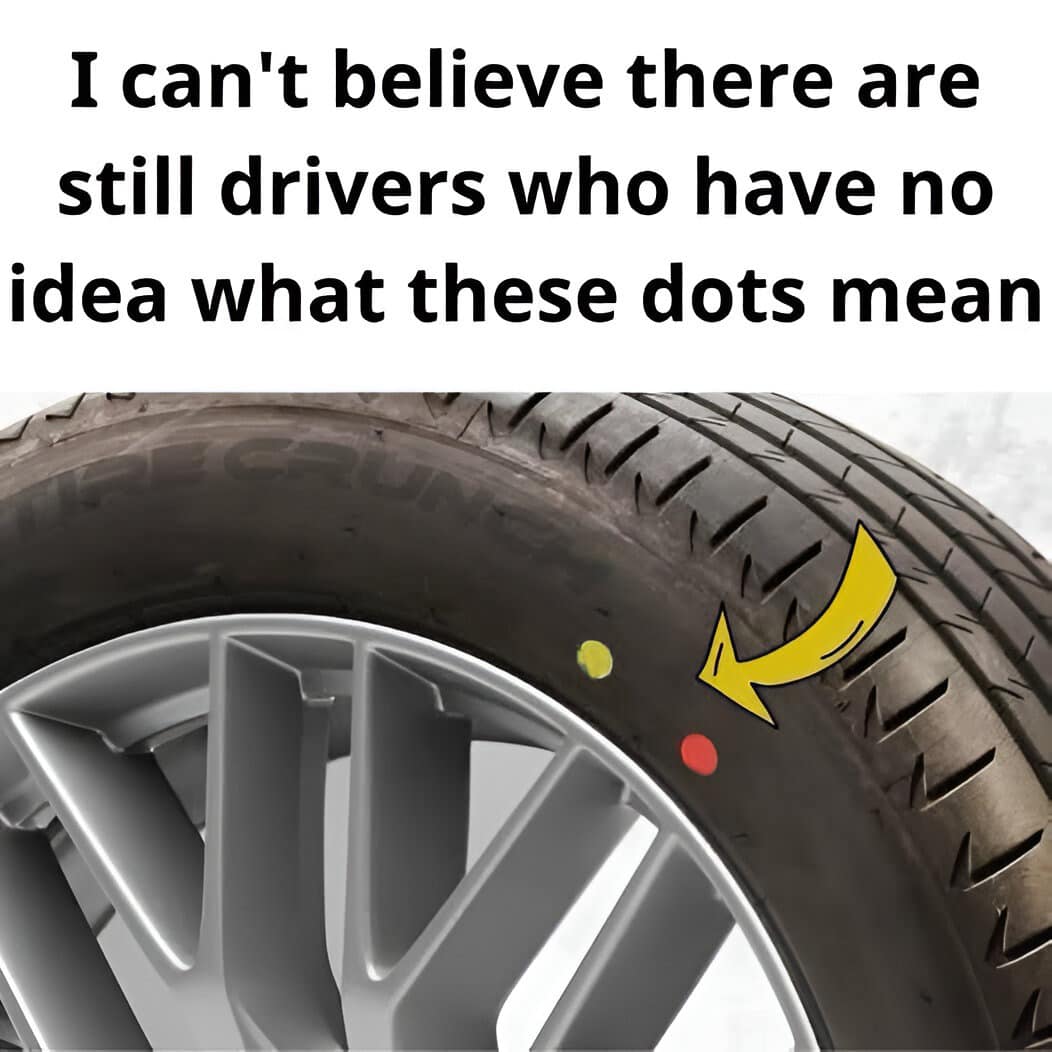Whether you’re a gearhead or just someone who commutes to work every day, chances are you’ve never paid much attention to the tiny colored dots on your car tires. But believe it or not, those little red and yellow dots serve a very important purpose—and they’re all about safety and performance.

Those Dots Aren’t Just for Decoration
Most people don’t realize this, but making a tire perfectly round and perfectly balanced is nearly impossible. Even with modern manufacturing technology, there are still slight imperfections in every tire and wheel. That’s where those colored dots come in.
Red and yellow dots are placed on tires by the manufacturer to help technicians properly install and balance them. These markings act as a guide to identify any irregularities in the tire’s structure so they can be compensated for during installation. In short, they’re there to make sure your tires perform as smoothly and safely as possible.
So, What Does the Red Dot Mean?
The red dot marks the high point of the tire, or where the tire is the most out-of-round. This is typically matched with a marking on the wheel (usually a dimple or sticker) that shows the lowest point of the rim. When the red dot on the tire is aligned with the wheel’s low point, it helps reduce the need for excessive balancing weights.
But there’s more. Sometimes, the red dot also identifies the tire’s heaviest spot, especially if the tire has an area that’s stiffer or thicker. The goal is to balance out that heavier section against a lighter part of the rim.
What About the Yellow Dot?
The yellow dot represents the lightest part of the tire. Technicians often align this with the valve stem on the wheel because the valve stem is typically the heaviest part of the wheel assembly. Pairing the lightest part of the tire with the heaviest part of the wheel makes balancing more efficient and helps reduce vibration when the tire spins at high speeds.
Now, here’s where it can get a little tricky: If a tire has both a red and yellow dot, the red one takes priority. That’s because correcting out-of-roundness generally has a greater impact on ride quality and tire wear than correcting for weight alone.
Balance Isn’t Just a Buzzword
You’ve probably heard the phrase “life is all about balance,” right? Well, the same goes for your car—especially your tires. Balanced tires ensure your vehicle runs smoothly, handles properly, and keeps wear on the tread even.
There are several reasons why a tire might become unbalanced over time. Driving on overinflated or underinflated tires can throw off the balance, especially during cold weather when air pressure fluctuates. Hitting potholes or curbs can also mess up the alignment. And simply letting a car sit for long periods can lead to flat spots and uneven wear.
To keep things in check, it’s a good idea to have your tires rotated every 5,000 to 8,000 miles. Some tire manufacturers even extend warranties up to 10,000 miles, but regular maintenance is key to getting the most out of your tires.
What’s the Deal with White Dots?
Occasionally, you might spot a white dot on a tire. This one tends to cause more confusion because it doesn’t have a universal meaning. Unlike red and yellow dots, which are fairly standardized, the white dot’s purpose can vary depending on the tire manufacturer. It might indicate a high point, a factory inspection point, or even something entirely unrelated to balance.
So if you’re scratching your head about that white dot, don’t worry—you’re not alone. Unless you’re working directly with the tire manufacturer’s guide, it’s not always clear what it means.
Why You Might Not Have Noticed Them Before
Here’s something interesting: a lot of drivers have never even seen these dots before. That’s usually because they’re buying vehicles with brand-new tires that have already been mounted and balanced at the factory. The dots may wear off over time, or technicians may clean them off after installation. If you’ve never needed to replace your tires or if you always go to a dealership for maintenance, these markings may have flown under your radar.
But for those who buy replacement tires or like to do some of their own car work, noticing and understanding these dots can be pretty helpful—and might even save you from unnecessary wear and tear in the long run.
Final Thoughts
While those tiny red and yellow dots on your tires might seem insignificant, they actually play a crucial role in maintaining a safe and smooth driving experience. They help compensate for manufacturing imperfections, reduce vibrations, and extend the life of your tires.
So the next time you’re getting new tires—or just happen to glance down at your wheels—keep an eye out for those dots. It’s a small detail that can make a big difference on the road.





